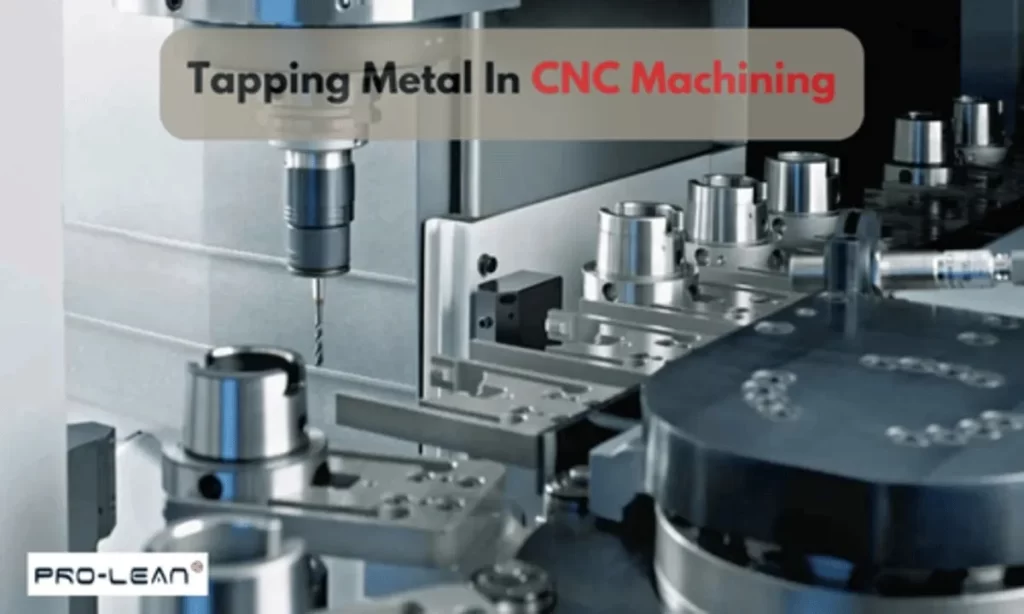
Tapping Metal In CNC Machining
Ever wondered how those perfectly formed threads are generated?
Tapping metal is a key link in the chain of manufacturing processes, whether it’s a tiny screw hole in a smartphone or a heavier bolt thread in an aircraft part. The twist, however, is that it is not just a matter of making a hole and putting in a screw. There are methods, challenges, and best practices that make tapping machining a precise art.
With CNC machining, metal tapping has improved productivity, precision, and consistency. However, issues remain, such as the evacuation of chips, tool wear, and maintenance of thread integrity.
ProleanTech delivers precise, hassle-free tapping with top-notch CNC machining. We always ensure clean threads, less tool wear, and smooth chip removal!
So, how do you guarantee a delightful tapping experience all the time? Let’s head to know metal tapping in CNC machining!
What is Metal Tapping?
Tapping is the method where internal threads in metal are cut within a pre-drilled hole. These threads allow for the secure fastening of screws or bolts. This process is crucial across multiple industries, like automotive and aerospace, where precision and durability count.

Precision Threading: Metal Tapping in Action for Strong Connections
However, you must be very careful during the tapping process to avoid any defect that could weaken the structure.
Tapping vs. Other Threading Methods
Although threading and tapping create threads, they are technically different.
Tapping operations are specifically employed for internal threads, whereas external threading is done through dies and thread milling.
But for both of these methods, threads in metal must have a good tolerance; otherwise, the screws will fit too loosely or tightly, resulting in structural weakness or breakdown.
CNC Tapping vs. Manual Tapping – Which is Better?
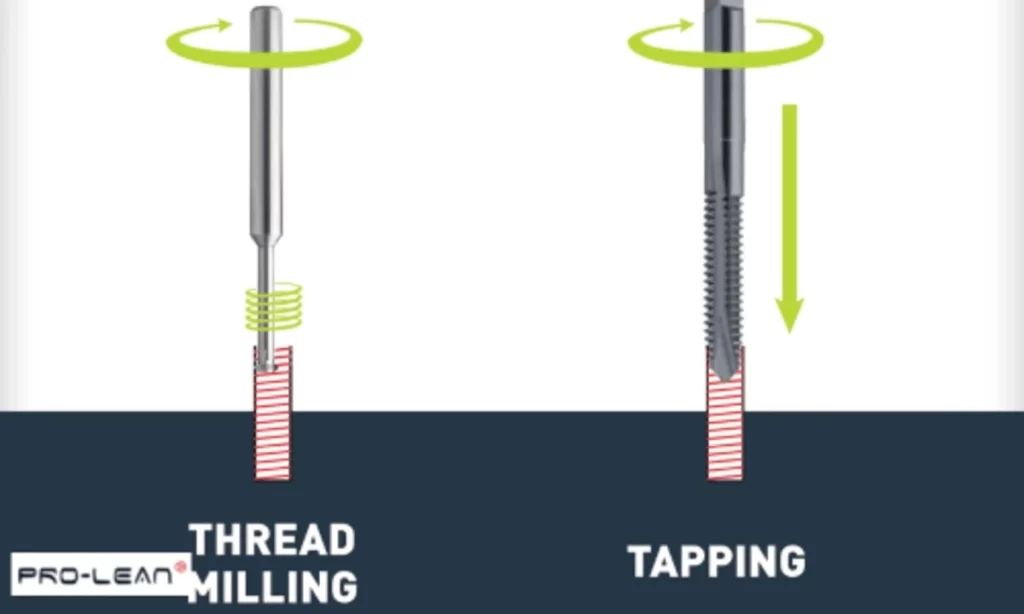
Thread Milling vs. Tapping: Understanding the Differences in Metalworking
You may wonder: Should I choose CNC tapping or consider using manual? It completely depends. If precision, speed, and repeatability are your concern, then indeed, CNC machining is the bet. It eliminates human error, rendering itself to high production volumes in minimum time thus making it very effective.
But then the cost of manual tapping is less. It is an excellent option for some small projects or repair works but takes a lot more time and work. Here are a few differences between manual tapping and CNC machine tapping:
| Feature | Manual Tapping | CNC Machine Tapping |
| Operation | Requires an expert hand and patience | Designed for automated operations |
| Precision | Depends on operator skill | Ensures high precision |
| Speed | Slower, due to manual effort | Faster, due to automation |
| Consistency | Variable, subject to human error | High consistency in results |
| Efficiency | Lower, due to manual involvement | Improved, reduces human error |
| Production Suitability | Better for small-scale or custom work | Ideal for large-scale production |
Now that we know what is tapping metal, let’s find different types of taps used for this process.
Try Prolean Now!
Types of Taps Used in Metal Tapping
The ultimate purpose of choosing the right type of tap is to ensure strong and durable threads in metal.
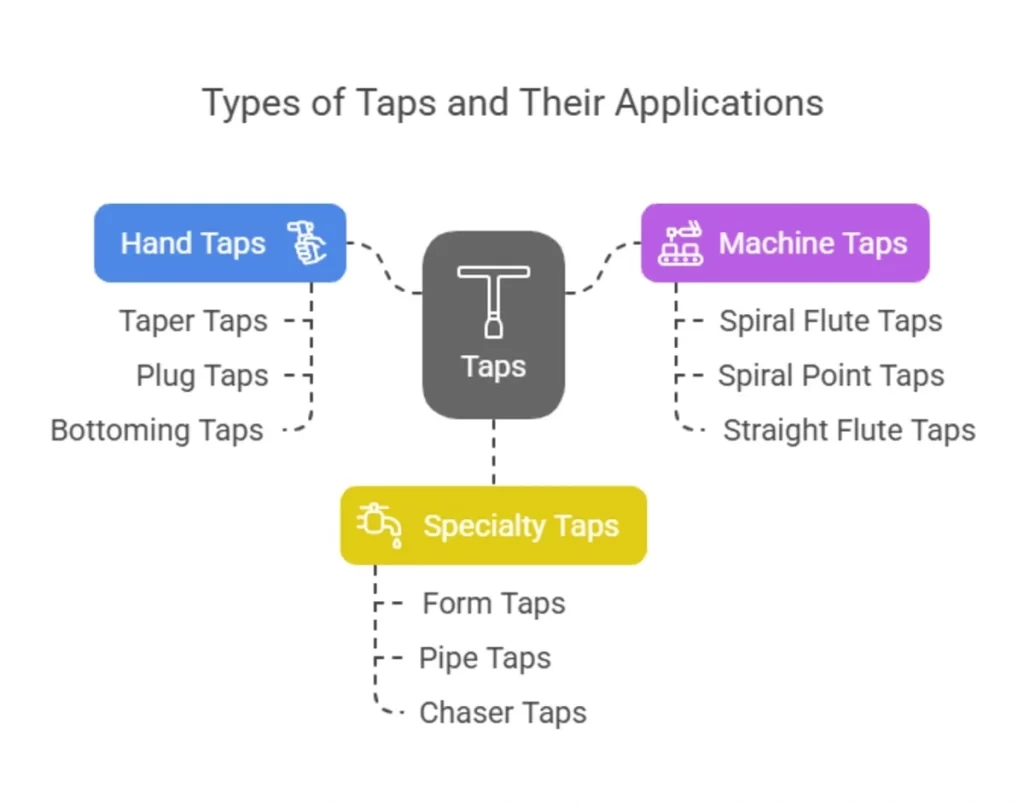
Understanding Different Types of Taps and Their Applications
Different types of tapping have different specifications that fit different use cases based on application and material considerations.
1. Hand Taps
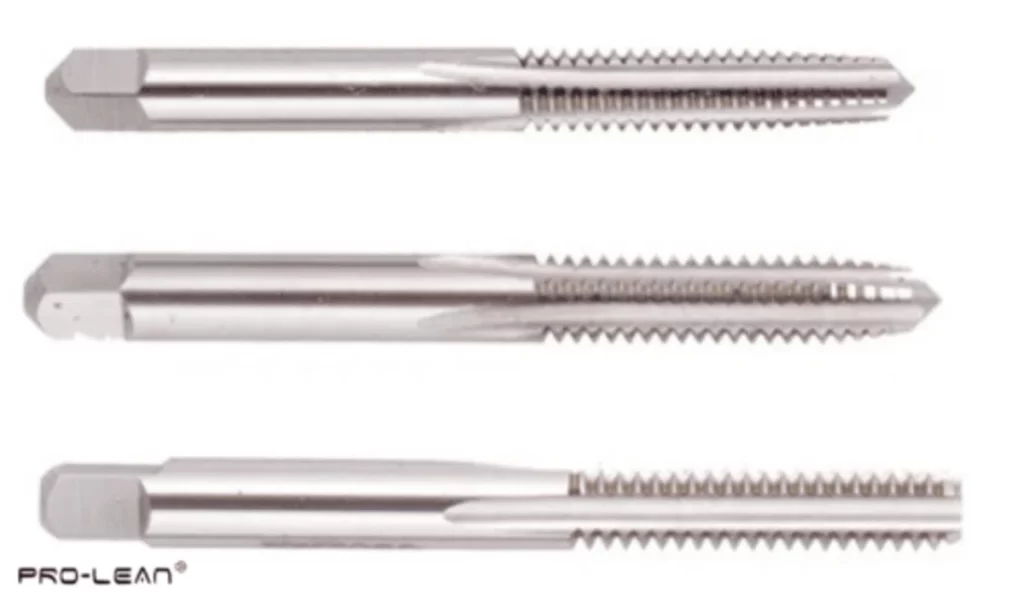
Set of Hand Taps
These taps are manually operated and usedtorcreateg internal threads in a variety of materials. They are necessary in precision threading in applications such as metalworking and in repairing purposes.
- Taper Tap: This starts a thread and is used wherever guidance is required. Its long, gradual taper helps smooth engagement even when tapping into very hard materials like steel.
- Plug Tap: Works in deeper holes while efficiently and uniformly tapping metal with minimal resistance.
- Bottoming Tap: Works in deeper holes while efficiently and uniformly tapping metal with minimal resistance.
2. Machine Taps
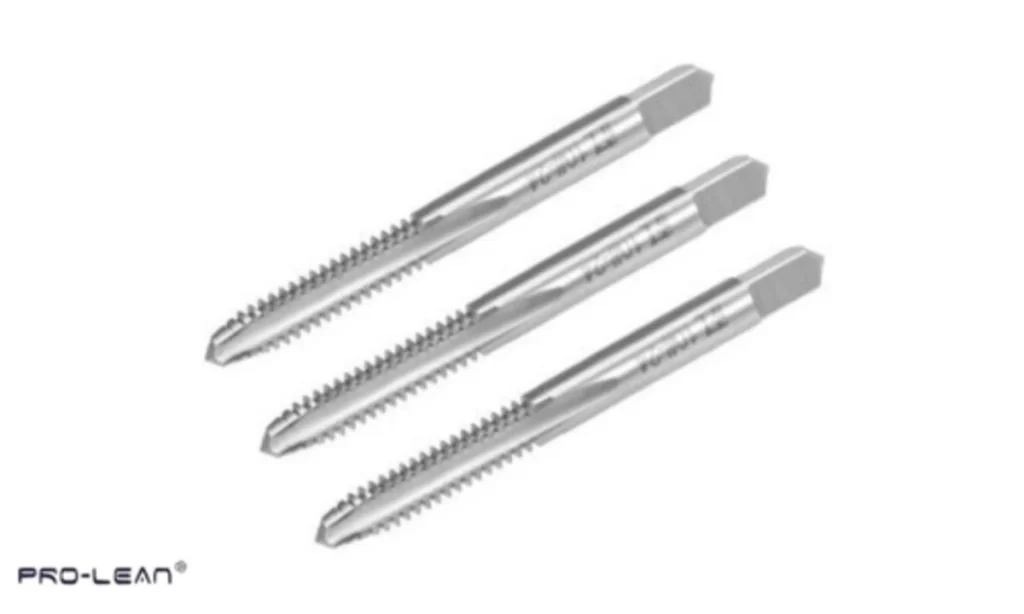
Set of Three Taper Hand Taps for Threading
Machine taps are designed specifically for power-driven applications, enabling faster and more consistent threading. By enhancing efficiency, they also prevent breakage which is a common risk during automated machining.
- Spiral Flute Tap: This tap is ideal. Its design allows chips to pass through holes and allows for smooth chip evacuation, which is extremely important during tapping machining.
- Spiral Point Tap:
This tap pushes chips forward and out through the hole, making it best suited for through holes. It performs exceptionally well in steel tapping, as it has excellent chip removal capabilities, even in difficult materials. - Fluteless Tap (Roll Form Tap):
This tap also pushes material forward but doesn’t produce chips, it forms the threads by displacing material. It is best used in through holes and performs exceptionally well in steel tapping, particularly in ductile and difficult materials. - Extension Tap: Utilized for deep-hole tapping machining, ensuring accurate threading in difficult places.
3. Specialized Taps
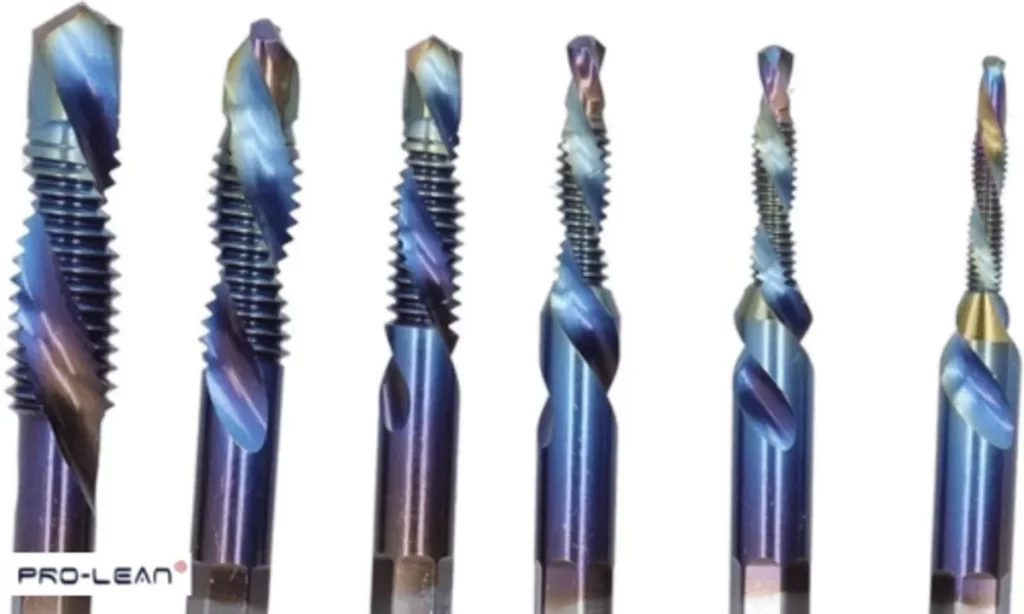
Set of 6 HSS Spiral Tap Drill Bits (M3-M10)
These taps are designed specifically for certain applications that require unique threading. They are used in industries such as gas fitting, pressure vessel construction, and specialized engineering.
- Gas Taps: These are meant for gas fittings to ensure leak-proof threading and tapping.
- Stay Bolt Taps: Useful in the construction of boiler and pressure vessels, as strong threads in metals are generally important for it.
- Bend Shank Taps: For unique applications where straight taps don’t fit. They are applied mostly in tapping steel for industrial components.
Choosing the Right Tap for Different Metals
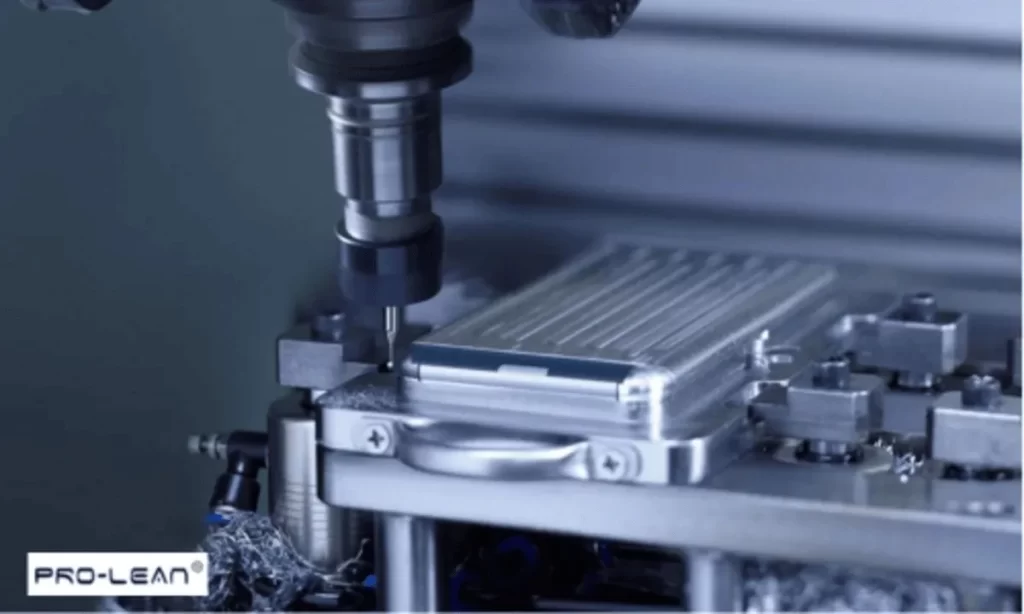
CNC Machining a Metal Part with Precision
Selecting the appropriate tapped metal ensures clean threads, reduces tool wear, and improves overall efficiency in the tapping process. Here’s what works best:
- Steel Tapping: They need long-lasting taps with lubrication due to excessive heat production.
- Aluminum: The sharp taps needed to prevent material sticking and deformation.
- Titanium: Demands high-performance taps due to hardness and requires optimized speed control during tapping machining.
Selecting the right tap makes all the difference in achieving flawless threads!
Try Prolean Now!
Challenges in Metal Tapping & How to Overcome Them
You might encounter multiple difficulties during metal tapping that will impact thread quality and tool longevity. Here are a few challenges you might face:
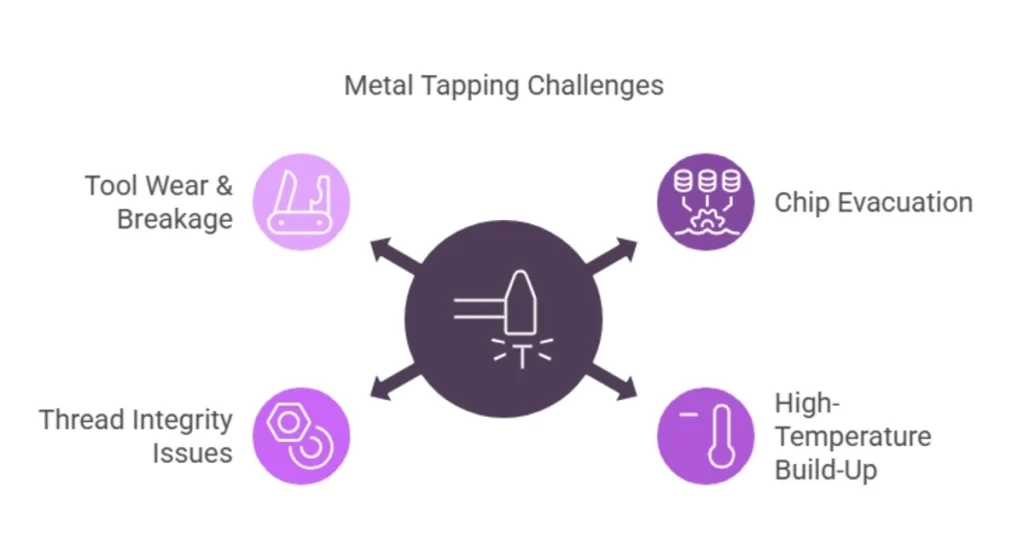
Metal Tapping Challenges: A Visual Overview
1. Chip Evacuation Issues
Chip removal playss a significant role in tapping machining. If chips remain, they can break taps and, thereby, mess up metal threads. Using spiral flute taps with high-pressure coolant proves very effective in chip removal.
2. High-Temperature Build-up
Heat can cause tool wear and inefficiency while tapping metal. Saving oil and controlling speed prevent overheating and thus increase the life of the tools.
3. Thread Integrity Issues
Threading accurately and tapping near edges can be troublesome. Using very high-precision CNC techniques ensures a crisp, repeatable thread and guarantees processes free of defects.
4. Tool Wear & Breakage
Maintenance of machine taps above speed and use of right coolant add life to the tool and improve efficiency in machining vs. casting.
Applying the correct techniques and tools to counter these problems is the path to smoother tapping, longer tool life, and flawless threads. Let’s examine those practices that give the best results for metal tapping!
Best Practices for High-Quality Tapping
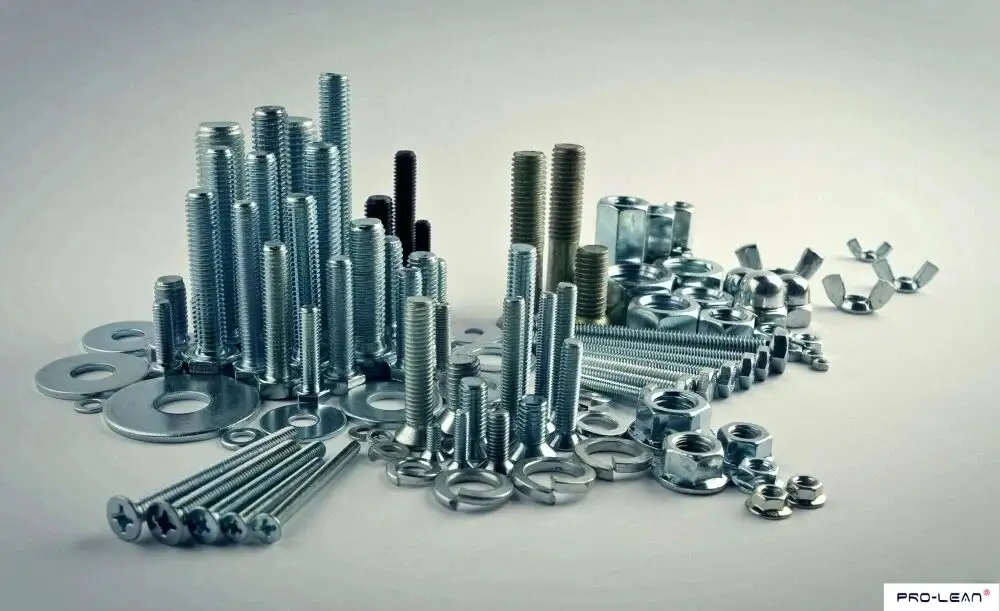
High-Quality Tapping Essentials
Follow these key practices to achieve precise, durable threads and extend tool life in metal tapping.
- Select the Right Tap: Match the tap to the material and hole type to avoid poor tapping process results.
- Optimize Speed and Feed Rate: Prevents tool breakage and ensures clean cuts, especially in steel tapping.
- Ensure Proper Chip Evacuation: Helps avoid clogging and poor thread in metal quality.
- Use Lubrication & Cooling: Reduces heat and friction, improving tapping machining efficiency.
- Apply Peck Tapping: Useful for deep holes, preventing chip buildup, and improving tapping process results.
Selecting the Right Tapping Method for Your Project
No tapping machining method is suitable for every project. There are diverse factors affecting the process of method selection. Here is what you need to watch for:
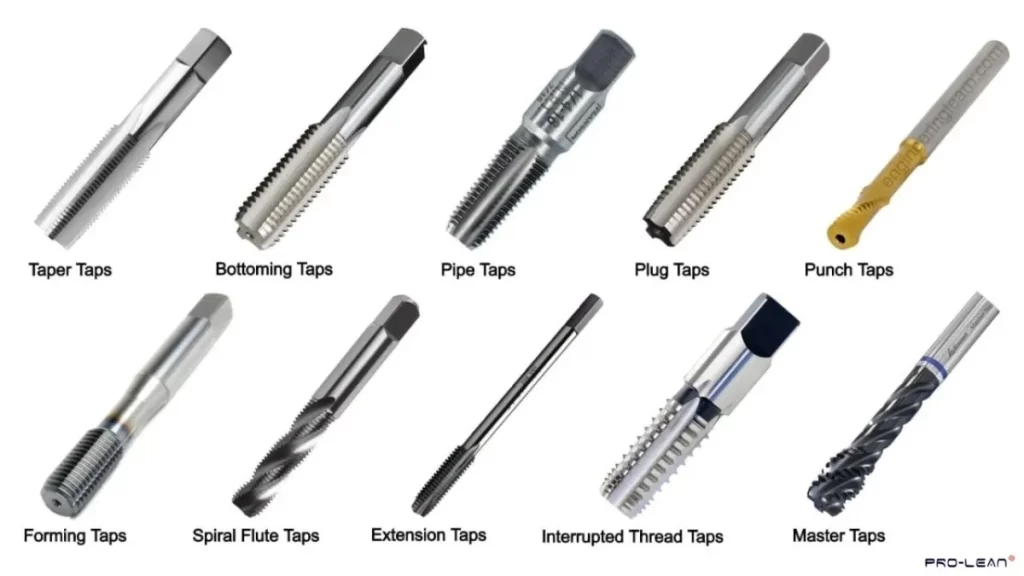
Tapping Methods: Choosing the Right Tap
1. Hole Type
First thing first, check the hole type because it will impact the tapping method you use.
- Blind Holes: Adequate chip control is required because the hole does not pass through. Obstruction of an adequate chip exit can break the tap or, in metal, lead to incomplete thread formation. Spiral flute taps have been the best choice for blind holes.
- Through Holes: As they allow free exit of chips, these holes are easy to tap. Spirals point taps are ideal for them for its ability to push chips forward.
2. Material Hardness
- Soft Metals: Soft metals like aluminum, brass, and copper should be machined using sharp, high-speed machine taps to avoid the taps’ wear from work materials.
- Hard Metals: Steel tapping and titanium require durable, high-speed steel (HSS) or carbide taps to withstand wear and heat.
- Exotic Alloys: Materials like Inconel and stainless steel require taps with special-coated surfaces that minimize friction and increase tool life.
3. Thread Quality & Tolerance
If your project requires high precision, opt for CNC machining as it allows uniform thread depth and pitch. Hand tapping, however, causes slight deviations that may not be suitable for tight tolerance applications.
4. Production Scale
- CNC Tapping is best for mass production, offering speed, accuracy, and repeatability.
- Manual Tapping works well for small-scale, custom, or repair projects where setup time for CNC is not justified.
5. Cost Considerations
CNC taps have a high initial cost but are a sustainable option in the long run. Manual tap is budget-friendly for prototyping or repair, but it is much less efficient in terms of volume produced.
Tapping machining selection can heavily affect efficiency, cost, and quality. Before making the decision, make sure to analyze your project requirements carefullyn.
Advanced Techniques in CNC Tapping
With the continuous technological change, the techniques for tapping have also evolved. A few include:
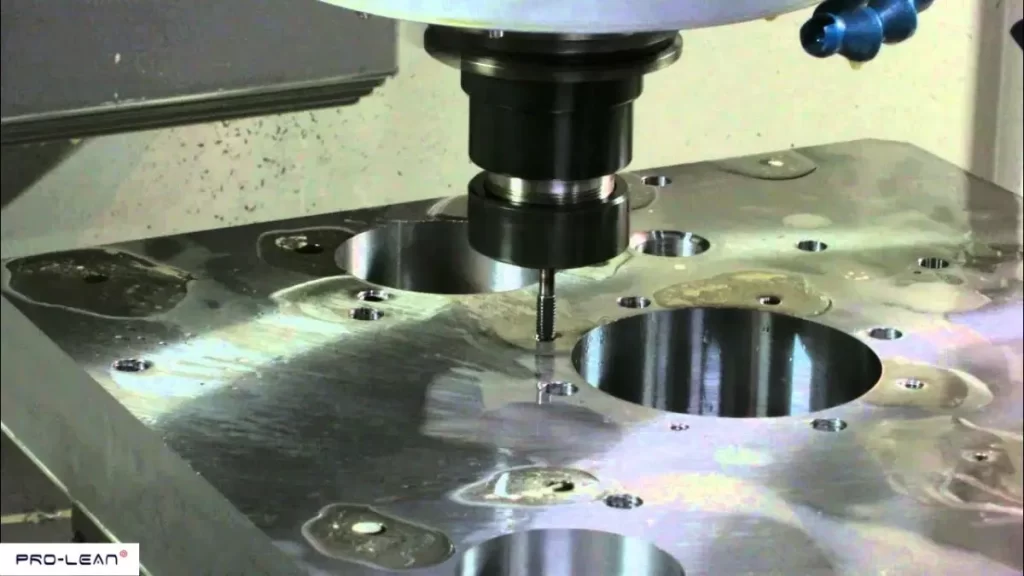
CNC Tapping: Advanced Precision
1. Thread Forming vs. Thread Cutting
Certain materials are good for thread forming, whereas others need cutting taps. In forming taps, the material is displaced to create a thread, meaning they are ideal for ductile metals. The cutting taps, on the other hand, remove the material to create sharp and accurate threads in metal.
2. High-Speed Tapping
Efficient in reducing cycle time and raising operating speeds, high-speed tapping is now the lifeline of CNC machining services. It provides high efficiency in the production process with consistency in accuracy. Adequate lubrication is fundamental in preventing excessive heat accumulation.
3. Multi-Axis Tapping
Multi-axis tapping is best used for geometries that require threads at different angles. Tapping in different directions is well-suited for advanced CNC machining setups. It makes it ideal for intricate designs in the aerospace and automotive industries.
4. AI & Automation in Tapping
Artificial intelligence and automation optimize speed, feed rates, and tool wear for tapping. Smart systems analyze real-time data to dynamically adjust parameters and improve the life and consistency of the thread produced on the tool. This is termed as the future of precision tapping metal operations.
For more information, check out: https://proleantech.com/all-about-cnc-machining/
Common Mistakes in Metal Tapping & How to Avoid Them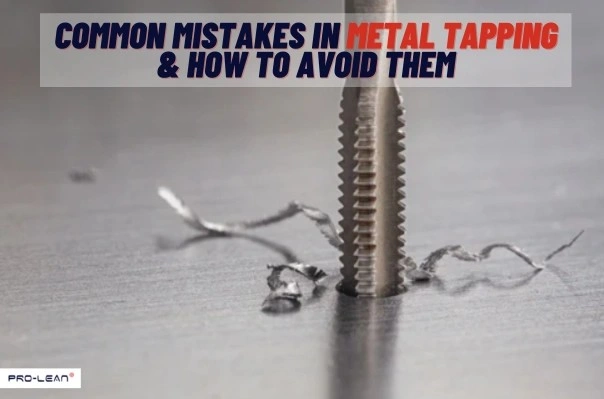
Metal Tapping Mistakes
Errors in metal tapping might lead to wasting materials or even breaking tools. Avoid these errors:
- Using the Wrong Tap
- Incorrect Speed or Feed Rate
- Poor Lubrication
- Ignoring Chip Evacuation: Clean threads are obtained with the correct tap, proper speed and lubrication, and efficient chip removal, and tool life is increased.
Why Choose ProleanTech for CNC Tapping & Machining Services?

Precision CNC Machining
At ProleanTech, nothing is about simply cutting threads. It’s all about precision! Whether tapping metal for industrial machinery, aerospace components, or automotive parts, we have the tools, expertise, and technology to deliver the best quality.
1. Unmatched Precision & Technology
Advanced CNC Machining: Precision-driven tapping machining with the latest technology.
Fast Turnaround & Competitive Pricing: High-quality threads on time and within budget.
Custom Solutions for Every Industry: From steel tapping to titanium, it is all handled by us.
Expert Support at Every Step: Our team guarantees perfect execution for every project.
2. Customized Solutions for Every Project
This is only the beginning! We know that every project requires something different. So, we design our approach by selecting the right tapping mechanism, tools, and feed rates suitable for your material and design.
From hardened steel to lightweight aluminium and exotic alloys, we use the best steel for machining to ensure that every thread is strong, accurate, and reliable.
Contact us today for a custom pricing estimate!
3. Exceptional Automation & Quality Assurance
Here, AI-enabled automation is working to:
- Enhance speed
- Reduce tool wear
- Improve efficiency
Our skilled machinists ensure that tapping machining takes place precisely, preventing common problems of thread deformation, chip buildup, or tool breakage.
Quality is not just an afterthought—it is a standard at ProleanTech. Our CNC machining services promise a complete repeatability and accuracy scope, ensuring that your components fit well each and every time.
If you need trustworthy CNC machining services, now is your opportunity to contact with our team experts for a Custom Price Quote! Let’s bring life to your project with precision threading and tapping.
Wrap Up
In short, tapping metals sounds simple, but getting it right takes skills, tools, and proper techniques. With CNC machining, it becomes faster, more precise, and repeatable. But the challenges of chip removal, wear of the tool, and heat build-up could create headaches.
The key is to pick the right tap, set a proper feed rate, and ensure adequate lubrication.
Still confused how to find reliable CNC machining services? Worry no more! ProleanTech has the equipment and veterans to give a perfect thread every time. Hire our CNC Machining Services today for accurate and reliable solutions with expertise!
FAQs
Q1. What is Tapping in Drilling?
Tapping in drilling means threading metal using a tap after drilling the hole. This process allows a screw or bolt to tighten very securely to form a good and dependable joint.
This technique is used in different fields, including construction, automobile, and aerospace industries. Tapping aligns with any fabrication processes to ensure a good fit between parts and is, therefore, one of the basic skills of any driller or machinist.
Maintaining proper tapping speed, lubricating the tap, and selecting the proper tap for the material involved will ensure the tap works smoothly without breaking or damaging the threads.
Q2. How Many Types of Taps Are There?
Taps come in many varieties: hand, machine, and special purpose. Each is suitable for different conditions and hole types with various depths, materials, and threading requirements. Taps are usually coated with titanium nitride or tungsten carbide for improved wear resistance.
For tapping machining, the correct tap selection avoids tool breakage, poor thread quality, and misalignment.
Q3. What is Metal Tapping?
Metal tapping involves cutting internal threads using a tap inside a pre-drilled hole. These threads allow screws or bolts to be fastened properly, ensuring strong and stable connections in metal components. It finds application in industries such as automotive, aerospace, and manufacturing.
Choice of the appropriate tap, speed, and lubrication is necessary to avoid damage of threads, tool wear, or any misalignment.
Q4. What Are the Disadvantages of Tapping?
Tool wear, clogging of chips and thread accuracy are some of the complications tapping brings, especially in the case of hard materials. However, these issues can be resolved with the effective use of high-quality machine taps, adequate lubrication, and optimized speed settings. While doing so, efficiency, durability and thread precision will be improved.
Q5. How to Tap Hard Metal?
Hard metals work best with HSS or carbide taps, lubrication, and good feed rate. For deeper holes on steel tapping or other hard materials, use peck tapping to prevent chip accumulation and unnecessary wear on the tool.

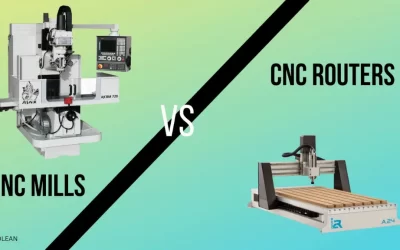

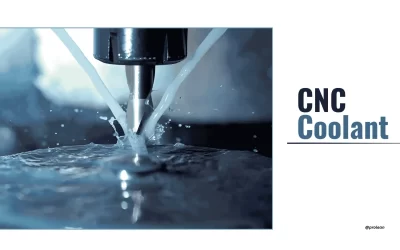
0 Comments